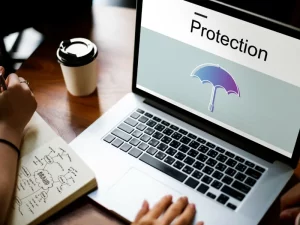In the realm of cybersecurity, insider threat represent a significant and often underestimated risk. Unlike external attacks, insider threats originate from within an organization, making them particularly challenging to detect and mitigate. Understanding what insider threats are, how they happen, and how to prevent them is crucial for safeguarding an organization’s assets and information.
What is an Insider Threat?
An insider threat is a security risk that comes from within the organization. It involves individuals such as employees, contractors, or business partners who have inside information concerning the organization’s security practices, data, and computer systems. These insiders can misuse their access intentionally or unintentionally, leading to data breaches, financial loss, and reputational damage.
How Insider Threats Happen
Insider threats can occur through various means, including:
1. Malicious Intent: Disgruntled employees or those with malicious intent may deliberately misuse their access to steal sensitive data, disrupt operations, or damage systems. This could be driven by personal grievances, financial gain, or espionage.
2. Negligence: Employees may inadvertently cause security breaches by failing to follow security protocols, such as leaving systems unlocked, using weak passwords, or falling victim to phishing attacks.
3. Compromise: Insiders can be compromised through social engineering, phishing, or other tactics, leading them to unwittingly assist in a security breach.
4. Third-Party Access: Contractors, vendors, and business partners with legitimate access to an organization’s systems can also pose a risk if they do not follow robust security practices.
Real Case Study: The Edward Snowden Incident
One of the most high-profile examples of an insider threat is the case of Edward Snowden. As a contractor for the National Security Agency (NSA), Snowden had authorized access to highly classified information. In 2013, he used his access to leak a vast amount of sensitive data regarding NSA surveillance programs to the public. Snowden’s actions had profound implications for national security, public privacy debates, and international relations. This case highlights the potential impact of insider threats, particularly when insiders have access to critical information.
How to Prevent Insider Threat
Preventing insider threats involves a multi-layered approach, combining technical measures, policy enforcement, and employee education:
1. Implement Strong Access Controls: Restrict access to sensitive information based on the principle of least privilege, ensuring that employees only have access to the information necessary for their roles.
2. Monitor User Activity: Utilize monitoring and auditing tools to track user activities, looking for unusual or unauthorized actions. This can help detect potential threats early.
3. Conduct Background Checks: Perform thorough background checks on employees, contractors, and partners to identify any red flags that could indicate a potential risk.
4. Regular Training and Awareness Programs: Educate employees about security policies, the importance of following protocols, and how to recognize potential insider threats.
5. Establish Clear Policies and Procedures: Develop and enforce comprehensive security policies, including guidelines for data access, use, and sharing.
6. Foster a Positive Work Environment: Addressing employee grievances and maintaining high levels of job satisfaction can reduce the likelihood of malicious insider actions.
Terrabyte: Your Solution to Combat Insider Threats
Terrabyte offers a comprehensive suite of cybersecurity services designed to protect your organization from insider threats. Our solutions include advanced monitoring tools, employee training programs, and robust access control measures to ensure your systems remain secure.
Terrabyte’s offerings include:
– Advanced Threat Detection: Real-time monitoring and analysis to identify and respond to suspicious activities indicative of insider threats.
– User Behavior Analytics: Tools that analyze user behavior patterns to detect anomalies that could signify potential threats.
– Regular Security Audits: Conducting thorough audits to assess and enhance your organization’s security posture.
– Incident Response Planning: Developing and regularly updating incident response plans to ensure quick and effective action when an insider threat is detected.
– Employee Training Programs: Educating your team on best practices for maintaining security and recognizing insider threat indicators.
By partnering with Terrabyte, you can fortify your defenses against insider threats and ensure the integrity and security of your organization’s assets.
Conclusion
Insider threats pose a unique and significant challenge to organizations due to the trusted access insiders have to critical systems and data. Understanding how these threats occur and implementing comprehensive preventive measures is essential for any organization. Terrabyte stands ready to provide the necessary tools and expertise to defend against these cyber threats and protect your digital assets.
For more information on how Terrabyte can help secure your organization, click button below


